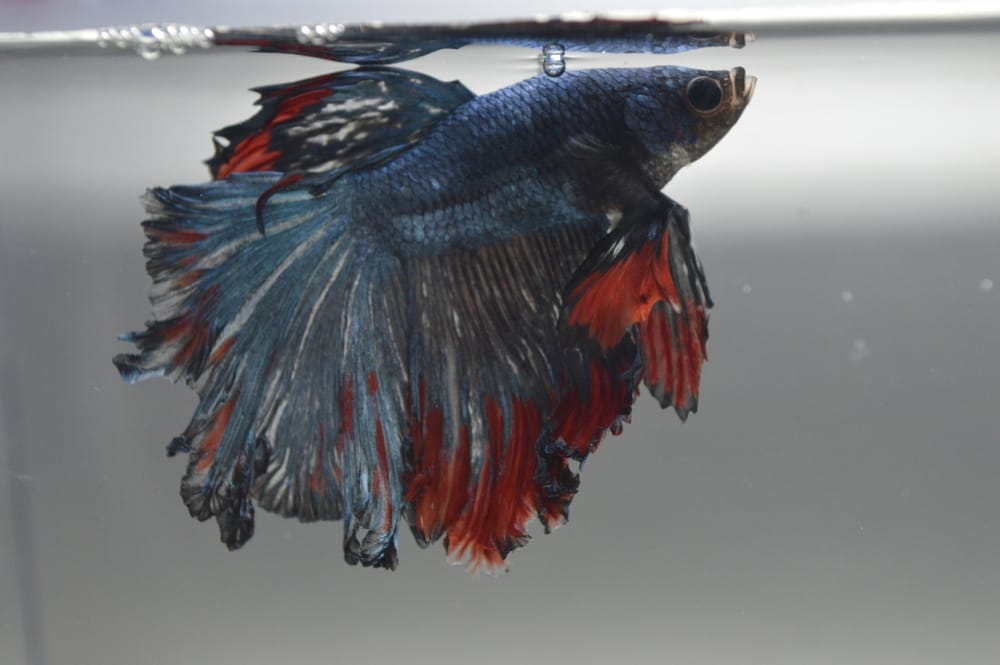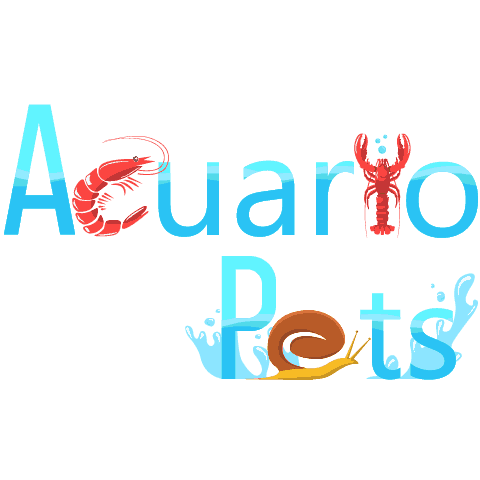This post was created with help from AI tools and carefully reviewed by a human (Muntaseer Rahman) . For more on how we use AI on this site, check out our Editorial Policy.
Check Out These FREE Tools We Made JUST For You!
Why Your Betta is Lethargic and Sitting at the Bottom of the Tank?

You walk up to your betta’s tank expecting to see that little diva doing its usual thing, and instead, you find them just lying there at the bottom like they’ve given up on life.
Your heart drops. Is my fish dying?
Here’s the thing: bettas lying at the bottom doesn’t always mean disaster. Sometimes they’re just being lazy (yes, really). But other times, it’s your fish’s way of screaming “HELP ME” in the only language they know.
Let’s figure out what’s going on with your underwater buddy.
First Things First: Is Your Betta Actually Sick?
Before you panic and start googling fish funeral arrangements, check these signs.
Your betta might just be chilling if: Their pelvic fins are still moving slightly, they perk up when you approach, and they’ll swim up for food without looking like it’s the hardest thing they’ve ever done.
Bettas are basically the house cats of the fish world. They rest a lot because dragging around those fancy fins takes serious energy.
Your betta is probably sick if: They’re pale, gasping for air, have clamped fins pressed against their body, won’t eat even their favorite foods, or they’re struggling to swim when they try.
If your fish looks distressed, keeps reading. We’re about to go through every possible reason and how to fix it.
The Usual Suspects: Water Quality Problems
Ammonia Poisoning (The Silent Killer)
Think of ammonia like carbon monoxide for fish. You can’t see it, but it’s burning their gills and slowly poisoning them.
High ammonia levels can cause fish to become lethargic and rest on the bottom of the tank, with symptoms including inflamed eyes and loss of appetite.
Ideal ammonia level: 0 ppm. Anything above 2 ppm and your betta is in serious trouble.
How to fix it: Do an immediate 25-50% water change using a water conditioner. Get an ammonia test kit (the API Master Test Kit is gold standard) and test your water weekly.
If you don’t have a filter, get one. Your betta might have a labyrinth organ that lets them breathe air, but that doesn’t mean they can survive in their own waste.
Nitrate Buildup (The Slow Death)
Nitrates are sneaky. They don’t kill your fish overnight like ammonia, but prolonged exposure to even 20 ppm of nitrate will cause signs of illness, making fish lethargic and weak.
Your betta might lose color, breathe rapidly, and lose their appetite.
Safe nitrate level: Below 20 ppm (ideally under 10 ppm)
How to fix it: Regular water changes are your best friend. Do 25-30% weekly water changes and don’t overfeed your fish. Uneaten food breaks down into ammonia, which becomes nitrates.
Temperature Shock (Too Hot or Too Cold)
Bettas are tropical fish. They’re not built for cold water.
When water temperature drops below 74°F, a betta’s metabolism slows down and they become very weak and lethargic. It’s like when you get so cold you just want to curl up and not move.
Ideal temperature: 76-82°F (with 78-80°F being the sweet spot)
On the flip side, water that’s too hot releases oxygen too quickly, leaving your betta gasping at the bottom.
How to fix it: Get an aquarium heater. Not optional. And raise the temperature SLOWLY, not all at once. Sudden changes cause temperature shock, which can kill your fish.
Swimming Problems: Swim Bladder Disease
This is probably the most common reason bettas end up doing the “dead fish float” or sitting at the bottom like a rock.
Swim bladder disease isn’t actually a disease. It’s a symptom that something else is wrong.
What Is Swim Bladder Disease?
Your betta has a little air sac inside their body that keeps them balanced in the water. When something messes with it, they lose their ability to stay upright.
Symptoms include buoyancy issues, a swollen belly, an s-shaped curved spine, inability to remain upright, and sinking to the bottom.
Your fish might look drunk, swimming sideways or upside down. Or they might just give up and sit on the gravel.
What Causes It?
Overfeeding is the number one culprit. Those pellets expand in your fish’s stomach. Think of eating a bunch of dry rice and then drinking water. Not fun.
Overeating and intake of air while eating can cause constipation and enlargement of stomach size, putting pressure on the swim bladder.
Other causes include bacterial infections, parasites, birth defects (especially in double-tail bettas), physical injuries, and egg-binding in females.
How to Treat Swim Bladder Disease
Step 1: Fast your fish for 3 days. I know it sounds harsh, but your betta won’t starve. This gives their digestive system time to clear out any blockages.
Step 2: Raise the water temperature to 78-82°F. Warmer water speeds up their metabolism and helps move things through their system.
Step 3: Feed a blanched pea on day 4. Remove the skin first. The fiber acts like a natural laxative. You can also use daphnia if you have them.
Step 4: Lower the water level. If your betta is struggling to reach the surface for air, make it easier by reducing the water depth to 8-10 cm.
If the problem doesn’t improve, it might be bacterial. Try an antibiotic like Kanaplex or an anti-parasitic medication like ParaCleanse.
Pro tip: Soak pellets in tank water for 15 minutes before feeding. This prevents them from expanding inside your fish’s stomach.
Strong Filter Current (The Invisible Enemy)
Imagine trying to swim in a wave pool 24/7. That’s what a strong filter current feels like to a betta.
It takes a lot of energy to constantly fight a strong current, and bettas might give up and rest by laying at the bottom of the tank.
Bettas come from calm rice paddies, not raging rivers. Those fancy fins make them terrible swimmers in strong currents.
How to fix it: Baffle your filter by attaching a sponge to the output or redirecting the flow toward plants and decorations. You can also switch to a gentler filter designed for bettas.
Poor Diet (You Are What You Eat)
Would you feel energetic eating nothing but crackers? Probably not.
Low-quality fish pellets contain corn or other filler products that are not easily digested, leading to bloating, lethargy, and lack of appetite.
How to fix it: Switch to high-quality betta pellets that actually contain protein. Add variety with frozen or live foods like brine shrimp, bloodworms, or daphnia.
And for the love of fish, don’t overfeed. Your betta’s stomach is about the size of their eyeball. Feed 3-4 pellets once or twice daily.
Tank Size and Boredom
Would you want to live in a closet for your entire life? That’s what a tiny bowl feels like to a betta.
When fish are confined to cramped spaces with nothing to explore, they get bored and depressed. Yes, fish can get depressed.
Minimum tank size: 5 gallons (bigger is better)
Add plants, hiding spots, caves, and decorations. Give your betta places to rest like leaf hammocks or broad-leafed plants. Bettas are smart, curious fish. They need enrichment.
Diseases and Infections
Bettas tend to experience disease more often due to weaker immune systems from intensive inbreeding. Those gorgeous flowing fins come at a cost.
Dropsy
This is a bacterial infection that causes swelling, protruding scales (pinecone appearance), lethargy, and loss of appetite.
Treatment: Antibacterial medications and aquarium salt. Quarantine the sick fish if you have tank mates.
Columnaris
Symptoms include white patches around the mouth, ragged fins, loss of appetite, and lethargy.
Treatment: Antibiotics and immediate water quality improvement.
Fin Rot
While fin rot doesn’t directly cause bottom-sitting, it reduces appetite which makes the fish lethargic and less able to swim for extended periods.
Treatment: Clean water, aquarium salt, and antibacterial medication if severe.
Old Age (The Natural Decline)
Bettas typically live 3-5 years with good care. After about 2-3 years, they naturally slow down.
After hitting the 5-year mark, bettas become lethargic and more susceptible to disease, preferring to lay around on leaves or the bottom of the tank.
If your older betta is eating and breathing normally, they might just be enjoying their retirement. Provide shallow resting spots and reduce the water level if needed.
Stress and Environmental Factors
Stress from changing conditions, shock from extra light, or being a recent new fish can cause lethargy and bottom-sitting.
Signs of stress include: Clamped fins, rapid breathing, swimming sideways, pale coloring, hiding constantly.
How to reduce stress: Lower the lights, remove loud noises nearby, add Indian almond leaves or rooibos tea (tannins help calm fish), provide plenty of hiding spots.
Aggressive Tank Mates
If your betta shares their tank and suddenly starts hiding at the bottom, check for bullying.
Bettas can be territorial, but they can also get picked on by faster, more aggressive fish.
How to fix it: Remove aggressive tank mates. Make sure the tank is at least 5 gallons if housing multiple fish. Add more hiding spots to create territories.
The Emergency Checklist (What to Do RIGHT NOW)
Your betta is lying at the bottom and you’re freaking out. Here’s your action plan:
1. Test your water immediately. Check ammonia, nitrites, nitrates, pH, and temperature. This tells you if it’s a water quality issue.
2. Do a 25-50% water change. This can’t hurt and might instantly help if water quality is the problem.
3. Check the temperature. Make sure it’s 76-82°F. Adjust slowly if needed.
4. Observe feeding behavior. Offer food. If your betta swims up eagerly and eats, they’re probably okay. If they ignore food completely, something’s wrong.
5. Look for physical symptoms. Bloating? Clamped fins? Pale color? Ragged fins? Pinecone scales? These point to specific diseases.
6. Reduce stress. Lower lights, minimize tank movement, add Indian almond leaves.
7. If nothing improves in 24-48 hours, treat for the most likely cause based on symptoms.
Prevention (Because an Ounce of Prevention…)
Most betta health problems come down to water quality and proper care. Here’s how to keep your fish healthy:
- Weekly 25-30% water changes (more frequent in smaller tanks)
- Test water parameters weekly using a liquid test kit
- Maintain 76-82°F temperature with a heater
- Feed high-quality food in small amounts (their stomach is eyeball-sized)
- Pre-soak pellets to prevent bloat
- Fast your betta one day per week to prevent digestive issues
- Use a gentle filter or baffle strong currents
- Provide a 5+ gallon tank with plants and hiding spots
- Add tannins (Indian almond leaves or rooibos tea) to boost immunity
When to Call a Fish Vet (Yes, That’s a Thing)
If your betta shows these signs, professional help might be needed:
- Heavy breathing or gasping combined with lethargy
- Complete loss of appetite for 3+ days
- Body swelling or pinecone scales
- Extreme curved spine
- Bulging eyes
- No improvement after 5-7 days of treatment
Aquatic veterinarians exist, and catching problems early drastically improves recovery chances.
The Bottom Line (Pun Intended)
Seeing your betta sitting at the bottom of the tank can be scary, but it’s not always a death sentence.
Sometimes they’re just being lazy fish. Other times, they’re telling you something’s wrong with their water, temperature, food, or health.
The key is knowing what to look for and acting fast. Clean water, proper temperature, good food, and a stress-free environment prevent most betta problems before they start.
Check your water parameters, make sure your tank setup is correct, and observe your fish’s behavior during feeding time. That’ll tell you 90% of what you need to know.
And remember: bettas are tough little fish, but they depend on you completely for their survival. A little extra care goes a long way.
Now go check on your fish. They’re probably wondering where their food is.
About Author
Hello, I’m Muntaseer Rahman, the owner of AcuarioPets.com. I’m passionate about aquarium pets like shrimps, snails, crabs, and crayfish. I’ve created this website to share my expertise and help you provide better care for these amazing pets.
Disclaimer
This site is owned and operated by Muntaseer Rahman. AcuarioPets.com is a participant in the Amazon Services LLC Associates Program, an affiliate advertising program designed to provide a means for sites to earn advertising fees by advertising and linking to Amazon.com. This site also participates in other affiliate programs and is compensated for referring traffic and business to these companies.

